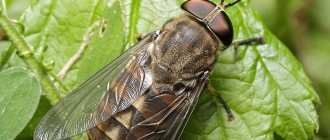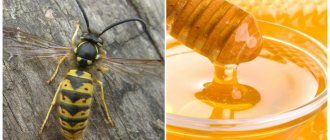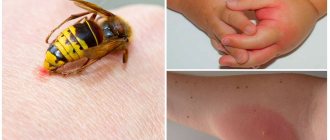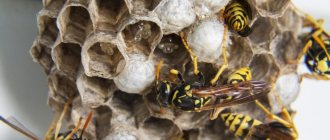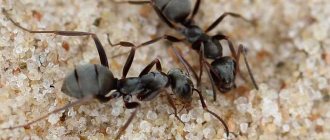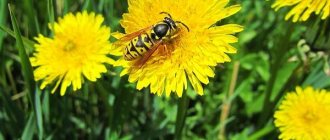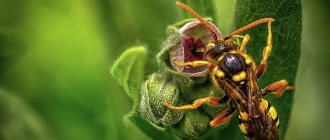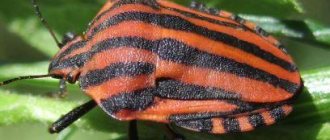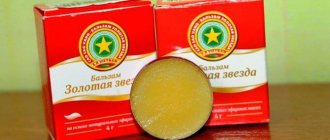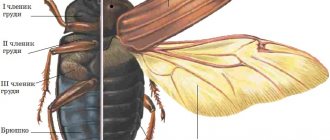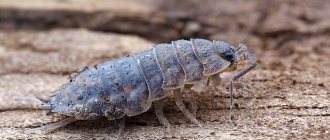People treat wasps with caution and hostility, expecting a sudden attack and bite. In fact, predatory insects are not that aggressive. If they are not provoked by sudden movements, then they calmly fly away about their business. Being close to wasps can be beneficial for gardeners. During the day, one female catches 20-30 pests - flies, caterpillars, beetles, butterflies. Small insects serve as food for the larvae. In nature, the benefits and harms of wasps balance each other. Stinging insects are part of the food chain; if this link is removed, an environmental disaster will occur. Is peaceful coexistence between humans and wasps possible?
Description and lifestyle
Wasps, together with their closest relatives bees and bumblebees, belong to the order Hymenoptera. Numerous insect species share a common body structure. Their chest and abdomen are connected by a thin, stalk-like waist. Adults have two pairs of membranous wings. Large eyes have a complex structure that allows them to see in several directions. Powerful jaws are adapted for gnawing fruit peels, removing bark from branches, and tearing apart prey. The body is covered with many hairs. Movable antennae are an organ of smell and help determine the size of the honeycomb when building a nest.
Information. The presence of a narrow waist allows the wasps to fold in half and sting the enemy from any angle. This quality helps to cope with a large opponent.
Among stinging insects there are solitary and social wasps. Only some species have the usual yellow-black coloration. For example, the chitinous shell of the lustrous wasp shimmers with a blue, purple and green metallic sheen. German females are densely covered with red hairs and have patterns on their abdomen. The size of the wasp imago ranges from 5 to 100 mm. Insects differ not only in size and color, but also in behavioral characteristics.
Adult wasps, regardless of species, feed on plant foods. They prefer to collect nectar and drink juice from soft, rotten fruits. Protein food is necessary for the growing larvae and the queen. To obtain food, adults have to hunt. The wasp, a polyphagous predator, is useful in controlling insect populations.
Information. Pompilid road wasps can cope with poisonous tarantulas. With a quick blow, they paralyze the spider and drag it into the hole to feed the larva.
Female solitary wasps make nests in the ground or plant stems. They leave food for their offspring in the form of paralyzed insects. Social wasps live in colonies. The colony is ruled by a queen who lays eggs. Worker wasps help care for the larvae and build multi-tiered nests. In the fall, the home is empty; only fertilized young queens survive the winter.
Recommendations regarding the time of year
In autumn and winter, it is convenient to remove the remains of nests - the residents have abandoned them or hibernated. The structure is knocked down with a stick or removed using a thick bag. It is not recommended to touch it with bare hands. The remaining insects will not have time to wake up enough to attack the target, but will sting on contact. Warm seasons become a period of preliminary measures and active control of wasps.
Spring time
With the arrival of warm days, baits are placed. They turn out to be one of the few food sources available to the awakened queens. In an effort to regain strength to organize the colony, pregnant queens will fly into the trap, reducing the number of wasps that will have to come into contact with during the hot season.
Summer season
As autumn approaches, insects change their food preferences - from sugars to proteins. Groups of wasps switch from fruits to garbage cans and other sources of proteins. Waste should be packed tightly. Summer is the time of maximum insect activity. It is necessary to fight them during this period only in case of aggressive behavior or severe damage to the crop. If the wasps are not a problem, you may want to postpone getting rid of them until cooler seasons.
Striped predators
At first glance, it is not clear why wasps are useful? Their main purpose, like any predator, is to maintain natural balance. The queen and worker wasps tirelessly hunt for various insects. Their remains are chewed, mixed with enzymes and used to feed wasp larvae. Among the most productive pest fighters in the garden are Scolia and Typhia. These families help get rid of the main enemy of plants - beetleworm. The larvae of the cockchafer are polyphagous; they eat the roots of any plant. The wasp offspring parasitize the pest larvae, eating it alive.
Scolia are primitive solitary wasps that help exterminate the larvae of lamellar beetles. The sizes of insects are from 10 to 100 mm, the wingspan is 60-100 mm. The body color is black, with bright yellow or red spots on the abdomen. Membranous wings with a purple sheen. Females lay eggs on the larva of the beetle, bronze beetle, and rhinoceros beetle. Scolia does not kill the victim, but immobilizes it. The larva that emerges from the egg begins to feed from the least important organs. This natural instinct helps keep food fresh for a long time.
Scolia's closest relative is Typhia. It is smaller in size (5-12 mm), the body is uniformly colored black. The female lays eggs on the larvae of pests - bread beetles. Thick-legged typhias live in Russia. This species has red-brown limbs. The entire body is covered with white hairs. Females dig a tunnel to a depth of 10 cm to paralyze the June beetle and lay an egg. After a few hours, the beetle larva is able to move, but its existence will not last long.
Information. The Larra wasp acts in a similar way, only it leaves its offspring to feed on mole crickets.
Striped paper wasps catch pests not in the ground, but on the surface and in the air. Their favorite prey is flies. They do not avoid caterpillars, bugs, leaf rollers, mosquitoes, or aphids.
If the socket is not available
The most difficult thing to destroy is a nest that is located in a place where it cannot be reached, for example, under the siding of a house, in a crack in a wall or floor, in the voids between the roof.
Even the use of insecticides in this case will be ineffective, since to destroy the nest you need to apply the composition directly to the surface of the nest.
Specialized services will also not help you, of course, unless you agree to break the wall or roof. In this case, you need to methodically leave tasty baits for the wasps, generously sprinkled with poison against the Colorado potato beetle.
They will eat it and carry pieces of food to the nest, thereby poisoning their relatives. Some people also use boric acid, but its effectiveness is less high. This way you can reduce the population. And at the end of the season - later in the fall, you need to carefully seal all the cracks and places that can serve as passages for wasps. After all, they will definitely move into an undestroyed nest next year. We do not recommend using polyurethane foam - wasps can easily make holes in it.
Wasps and flowers
What other benefits are there from wasps? In order for plants to produce a good harvest, pollination is necessary. About 20% of crops can be wind pollinated or self-pollinated. The rest need helpers to transfer pollen. Traditionally it is believed that bees do this. But wasps do the same thing. Adults eat plant foods. They love nectar, so they fly from one flower to another. Pollen clings to the paws and body, covered with hairs, and ends up on other flowers. The flight radius of a bee is limited by the location of the apiary, and their striped relatives settle anywhere. Wasps play a subtle but significant role in pollination.
Application in medicine
There are no known cases of widespread use in modern medicine of the toxic substance contained in wasp stings. The reason for this may be its difficult extraction. However, some experimental developments are being carried out.
Treatment of diseases
There is an opinion that some substances that make up wasp venom have a detrimental effect on cancer cells.
For example, in some countries scientists are working on creating a vaccine against malignant tumors.
Although the invention has not yet been patented, there is evidence that the results are encouraging.
- Is a wasp sting beneficial for humans or is it more misconception than truth;
- How can a wasp sting be harmful, especially for people prone to allergies;
- The composition of wasp venom and the characteristics of its effect on the human body.
So, how is a wasp sting useful and can the venom of this insect generally have a positive effect on the human body? Generally speaking, the answer to this question is not as simple as it might seem at first glance. And the “first glance” here is this: due to the similarity of the compositions of wasp and bee venoms, many fans of apitherapy (treatment of diseases using bee products - including bee venom) are inclined to believe that wasp stings are useful, and that their venom can be used in fight against various diseases.
According to this version, the only obstacle to the widespread practical use of wasp venom is the difficulty of obtaining raw materials: if bee venom can be obtained in almost unlimited quantities in apiaries using established methods, then to obtain wasp venom you will need to look for wild nests and catch the insects themselves. Or somehow organize mass construction and colonization of nests with wasps - this technology has not been worked out and seems quite problematic.
But is a wasp sting really beneficial? Despite the fact that the composition of the venom of this insect has been quite well studied, and scientists know how it acts on different tissues and organs, the final benefits and harms of a wasp sting for a person are almost always determined by the individual characteristics of the body of the bitten person - the response of his immune system.
For example, it is widely known that many people are highly sensitive to insect bites in general, and to hymenoptera bites in particular. Do you think a wasp sting will be harmful to them? Practice shows that for such people even a single bite will not only be harmful, but may even be fatal.
An important feature of wasp venom is its high allergenicity, sometimes leading to life-threatening edema and anaphylactic shock in sensitized people.
The main components of wasp venom:
- histamine, which contributes to the development of allergic reactions;
- phospholipases are special enzymes that destroy the cell walls of various tissues, as well as blood cells, as a result of which a large amount of their contents is released into the blood (in particular, additional histamine is released from mast cells, which greatly increases allergies);
- hyaluronidase, which also destroys cell membranes and leads to the development of inflammation at the site of the bite;
- acetylcholine, which plays an important role in the conduction of nerve impulses;
- a hyperglycemic factor leading to an increase in blood sugar.
It is worth noting that different wasps have their own specific composition of poison. For example, the venom of hornets, the largest wasps, contains special polypeptides mastoparana and crabroline. These substances also cause the victim's mast cells to break down and release more histamine.
According to unconfirmed data, regular wasp stings (like bee stings) are useful in that they help increase the amount of hemoglobin in the blood and reduce cholesterol levels, and dilate blood vessels.
The effect of small amounts of wasp venom on the human body often leads to some intensification of the victim’s breathing, increased heart rate and increased blood flow to the bitten organ. In more severe cases, severe swelling, subcutaneous hemorrhages, heart pain, shortness of breath, dizziness, confusion, vomiting are observed - there is no need to talk about any benefit from the bite.
Why don't people like wasps?
If the benefits of striped insects are not always noticeable, then people feel the full extent of the harm from them. It manifests itself not only in bites, but also in eaten fruits and berries.
Spoiled Harvest
After pollination of plants, insects lay claim to the fruits. They prefer soft, sweet fruits. A large swarm can damage a large number of apples, pears, plums, and raspberries. Grapes are especially affected. Wasps, with their strong mandibles, easily gnaw through the skin and drink the juice. Damaged berries impair the presentation of the bunches.
Various methods are used to control insects:
- hang baits;
- destroy nests;
- grapes are treated with chemicals;
- The bunches are wrapped in special bags.
Bee exterminators
Beekeepers experience the greatest harm from wasps. Predators are attracted to the aroma of sweet honey. They sneak into the hive and eat the supplies prepared by the bees. Lack of food weakens the brood. In addition, a battle ensues between bees and wasps, in which many honey plants die. A strong family is able to fight off paper wasp invaders, but a weak one may not be able to cope.
The attack on the apiary by the largest representatives of the wasp family - hornets - turns out to be critical. Striped giants are significantly larger than bees. They easily tear apart prey, grabbing it on the fly. A hive with honey and insects becomes an ideal food source for them.
Another enemy of beekeepers is the philanthus or bee wolf. This is a solitary wasp of small size 10-17 mm. She paralyzes her victim with a stinger blow under the chin. This place is not protected by chitin and the poison quickly enters the main nerve ganglion. Nectar is very harmful to the offspring of the philanthus. He carefully crushes the killed victim with his paws, squeezing out the contents of the abdomen. The nectar is eaten by the adult, and the bee's body is given to the larvae.
A wasp sting is painful and dangerous
Insects use two types of self-defense. The first is the repellent coloring. It signals to birds and reptiles that the wasps are poisonous. As an active defense, they use a sting located at the end of the abdomen. Over the years of evolution, the female's ovipositor has turned into a hard tube. The smooth organ does not get stuck in the skin, so the insect is capable of inflicting many bites. The sting is connected to a gland that produces poison. The chemical composition of the toxic substance varies depending on the type of wasp. In case of danger, the insect releases a special enzyme that calls the rest of the family to help. Having disturbed one individual, you may encounter an attack by a whole swarm.
Information. Insects with highly toxic poison include Asian hornets. Several people die from their stings every year. An attack by road wasps is not fatal, but extremely unpleasant. Their bite is in second place in terms of pain, second only to tropical ants.
After a bite, the following symptoms may appear:
- burning and itching;
- redness and swelling;
- headache;
- increased heart rate.
Attention. A bite to the neck area is extremely dangerous; it causes suffocation. People who are allergic to wasp venom may experience anaphylactic shock. They need to be taken to the hospital.
The stung person should be given first aid. The bite site is treated with an antiseptic - hydrogen peroxide, alcohol tincture. To reduce pain and relieve swelling, use a cold compress.
Safety precautions
Before you begin expelling wasps from the site, especially if the activities include the destruction of a wasp nest, you must follow safety precautions.
Even one bite can cause a severe allergic reaction, the presence of which a person may not even suspect. While several bites can even provoke anaphylactic shock.
- Be sure to buy an antihistamine and alcohol to treat the bite site if necessary;
- If you know a beekeeper, ask him for a special protective suit. If you don't have one, be sure to wear clothes with long sleeves and pants made of thick fabric. It is advisable that the jacket have a hood to protect your head. It is advisable to tuck the legs into socks, and the sleeves into leather or thick fabric gloves, so that the wasp cannot fly under the clothes;
- The face must be protected with a mosquito net;
- If you use special sprays or poisons, make sure your pets are not exposed to them. If you use any other means, protect the animals. An angry swarm of wasps will zealously defend its nest and can severely sting anyone it encounters.
How to kill stinging insects
No matter how great the benefits of wasps in nature are, in some cases people have to take extreme measures and destroy dangerous neighbors. To reduce the number of insects, special traps are used. These are homemade or purchased containers with sweet bait. Individuals that fly into them cannot get out. You can get rid of the nest using modern insecticidal preparations. Aerosol products - Dr. Klaus, Mosquitoll. Dichlorvos allows you to quickly and effectively destroy stinging insects. An effective way is to burn the nest. But you won’t be able to use it under the roof of a house or on a tree.
Everything created by nature has its purpose. Beneficial insects, wasps, should not be underestimated. Without these tireless hunters, cities would have to fight off hordes of flies. In gardens, predators destroy harmful insects, allowing you to use chemicals less often.
Folk remedies for destruction
With the help of folk remedies, you can quickly and easily get rid of unwanted neighbors on your property.
Watermelon rinds
Melon or watermelon rinds would be good bait. It is necessary to water them with an insecticide with a neutral odor and spread them around the area - the insects will feast on the poison and die.
Bottles with bait
It is necessary to cut the plastic bottle into two parts so that you get a separate bottom and a separate top and neck.
Pour diluted jam or syrup into the lower part and insert the top without a lid, neck down. It is important that the bait does not touch the neck of the bottle.
The insect will be able to climb inside, but will not be able to get out and drowns. For greater reliability, the neck can be lubricated with Vaseline or vegetable oil.
Such baits should be placed on the site and hung in the garden. Periodically, dead wasps should be thrown out of bottles and new syrup should be poured into them.
Expert opinion
Mityuk Stefania Bogdanovna
A liquid with a persistent sweet aroma is more attractive to wasps than just sugar diluted with water. Therefore, ideally use old juices, jams or compotes.
Liquid smoke
A harmless way to protect the crop and keep the wasps alive. To do this, you need to spray the bushes and trees with liquid smoke (available at most grocery stores). Insects are afraid of smoke and will not approach fruit plants.
If there is no liquid smoke, instead of it, pine logs can be laid out on the site and set on fire - the smell of burning pine will repel wasps and will not harm people and pets.
Poison cones
To do this, you will need to cut off the bottom of a plastic bottle to form a cone. Near the cut you need to make two holes, with the help of which you can hang the cones on the trees on a rope.
You need to pour diluted jam or syrup into the resulting drinking bowls and add any insecticide against insects.
The wasps will drink the poisoned syrup and die far from the drinking bowl. All that remains to be done is to add new syrup to the drinking bowls.
Can of beer
For this trap you need to use 750-1000 ml glass jars. Place a 1.5 cm layer of sugar on the bottom, add 100 ml of water and add beer to half the can.
Cover with a tin lid with small cross-shaped slits (up to 1 cm in length). The corners of the cuts need to be bent inside the jar - through them the insects will penetrate into the trap and will no longer be able to get out.
Before using the above baits, it is important to ensure that they will not harm bees or pets.
Social types
Colonial and hive-building species are just a small part of the species diversity of wasps. Most wasps are solitary, some of them are very tiny (some are almost microscopic), they never bother people and no one ever notices them.
Social wasp hives are built from wood fiber mixed with water. The result is something like papier-mâché, from which very strong and durable structures can be made. Hives begin to be built in late spring, when the queens awaken from hibernation.
The queen herself builds a small nest of just a few cells and hatches the first batch of workers. When the workers grow up, they also begin to work for the benefit of the developing colony.
image copyrightGetty Images
Social wasp hives are built from wood fiber mixed with water.
Worker wasps work tirelessly to raise their sisters from the eggs the queen lays, collaborating and communicating to build and defend the nest, gather food, and care for the queen. When the colony becomes large enough, the workers begin to feed some of the young larvae more and more often than usual, causing the genetic changes necessary for the development of a potential queen.
Male wasps, which do not participate in the social life of the colony, emerge from unfertilized eggs in a form of sex determination called haplodiploidy.
Potential queens and males are the reproductive future of the colony. After mating with males from other colonies, the queens overwinter and establish their own colony in the spring.
Wasps do not produce honey, but are nonetheless important to the environment.
Benefit or harm
A person sees and appreciates only a small part of what wasps can do
In most cases, attention is directed to the negative qualities of insects. Often a person fights wasps without thinking about the consequences, just because they spoil grapes, eat berries, and can potentially sting painfully.
Harm to humans
The danger of a bite is always put first. Since people most often encounter social, paper wasps, we are talking about them. The insect pierces the skin with a sting and injects poison, which instantly causes a reaction in the body in the form of redness, swelling, and pain. With weak immunity or the presence of individual intolerance, an ordinary wasp bite turns into serious health complications. Allergy manifests itself not only as local irritation of the skin, but also as a deterioration in well-being.
- headache;
- dizziness;
- changes in blood pressure;
- loss of consciousness;
- increased body temperature;
- nausea;
- vomit;
- diarrhea;
- loss of orientation;
- convulsions;
- swelling of the larynx.
In severe cases, the reaction develops instantly; swelling of the larynx can occur in just 5 minutes. In the absence of qualified help, a person dies. The situation is extremely rare, but it does happen. Severe allergies can occur even in those people who have previously been repeatedly exposed to insect bites and have always tolerated them easily.
Harm to humans from a wasp sting
In various sources there is a statement that wasps attack only in case of danger to their own life, but they can regard any human movement as aggression and rush to attack. A small insect can simply not be noticed, stepped on or pressed. A bite will definitely follow. The situation is extremely dangerous when a person approaches a wasp nest; a massive attack of insects causes severe allergies.
To protect yourself from troubles in the warm season, you need to avoid making sudden movements when you see a wasp, behave carefully in nature, and always carry an antihistamine with you.
